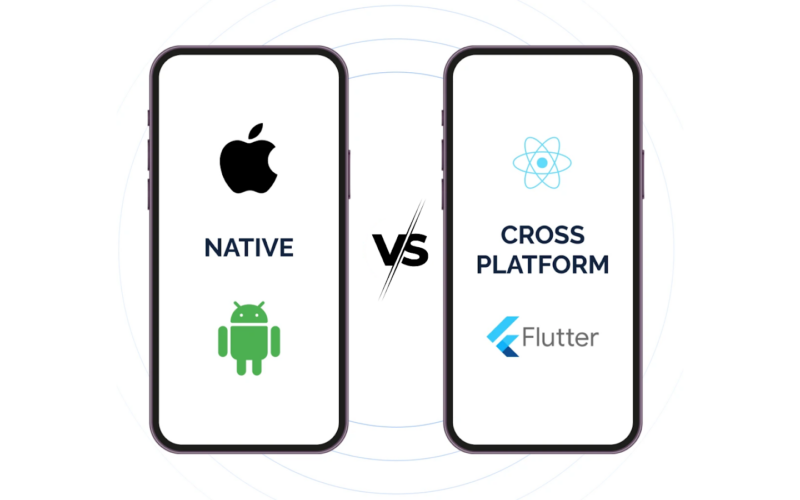Customer service in Australia is under pressure. People expect fast, personalised, 24/7 support without waiting in queues or talking to five different agents.
At the same time, businesses are struggling with rising service costs and staff shortages. The Australian Bureau of Statistics reports that “almost one third (31%) of employing businesses had staff shortages”.
Traditional tools like scripted chatbots and call flows can’t keep up with complex, multi-step queries. They’re reactive and rigid.
Agentic AI for customer service offers a smarter path. These systems don’t just respond. They act. They can plan, make decisions, complete tasks across systems, and escalate when needed.
If you lead customer experience, product, or operations in an Australian business, this blog will show you how agentic AI for customer service can improve service, reduce load on teams, and help you stay compliant with local regulations.
Overview
- Customers in Australia expect instant, personalised, human-like service
- Legacy chatbots can’t handle complex or multi-step requests anymore
- Agentic AI for customer service doesn’t just chat; it takes action across systems
- Real results: faster resolution, lower costs, 24/7 availability, and happier customers
- Already in use across finance, retail, real estate, and telco in Australia
- Easy to deploy with tools you already use like Zendesk, HubSpot, Xero
- A clear regulatory path and local cloud support reduce rollout risk
- Get it right, and you turn customer support into a strategic advantage
Why Agentic AI Changes the Rules for Customer Service
Agentic AI is not just another AI upgrade. It marks a fundamental shift in how digital systems interact with your customers. Instead of waiting for inputs and following rigid scripts, these systems act with autonomy and intent; just like a trained service rep would.
What Makes AI “Agentic”?
Agentic AI systems are built to take initiative. They combine language understanding with decision-making and memory, allowing them to complete tasks rather than just respond to questions.
Core characteristics of agentic AI:
- Autonomy: Operates independently within defined goals and boundaries
- Adaptability: Responds to changing user inputs and system conditions in real time
- Goal orientation: Plans and executes steps toward completing a task without constant human input
- System integration: Connects with CRMs, knowledge bases, APIs, and ticketing systems to gather data and take action
Why Agentic AI is a Step Beyond Traditional Bots
Older chatbots are typically built on rules or decision trees. They follow fixed paths and often fail when customer requests go off-script.
Agentic AI eliminates those limitations by using reasoning, memory, and planning modules. It can handle more complex queries and see them through to resolution.
Key differences from traditional bots:
- Handles multi-step workflows instead of one question at a time
- Learns from context and adapts based on what the customer says mid-conversation
- Performs actions like booking, updating, refunding, or escalating automatically
- Replans when blocked rather than showing an error or transferring to a human prematurely
Also read: The Anatomy of Agentic AI: Understanding AI Agents
Why Australia Is Leading in Agentic AI for Customer Service
Australia is in a strong position to lead the adoption of agentic AI in customer service, not just because of infrastructure and regulation, but because the outcomes align with what local businesses need most: scalability, speed, control, and reduced overhead.
Here’s how those advantages translate into real business impact.
A Service-Centric Economy Needs Smarter Scaling
Retail, banking, insurance, and education are some of Australia’s most customer-intensive industries. Each depends on high-touch support that often stretches internal teams.
Agentic AI gives these sectors the tools to:
- Resolve complex service tasks like refunds or policy updates without manual effort
- Handle peak volumes like holiday sales or policy renewals without expanding headcount
- Deliver first-contact resolution across CRM, billing, and logistics platforms
- Shift from reactive queue management to proactive, resolution-driven service
For Australian businesses, this turns service operations from a cost centre into a source of operational leverage.
Cloud Infrastructure Reduces Time to Deploy
Agentic AI systems rely on connected platforms, fast APIs, and scalable compute, all of which are readily available in Australia.
What this means for your tech team:
- You can deploy agentic agents on top of existing tools like Zendesk, HubSpot, Xero, or MYOB
- Local cloud regions from AWS, Azure, and Google Cloud meet your data residency needs
- Your agents can access secure, real-time data without rebuilding backend workflows
- Setup timelines drop from months to weeks with integration-ready platforms
You’re not starting from scratch. You’re activating capabilities that your systems already support.
Regulatory Clarity Supports Confident Execution
Australia’s privacy and data laws are well-defined. That gives local businesses a significant edge when deploying AI compared to markets still navigating ambiguous regulation.
For service and compliance teams, this means:
- You can design agent workflows that fully align with the Privacy Act and APPs
- You can safely host customer data in-region and avoid offshore compliance risks
- You have guidance from OAIC and national AI ethics frameworks to inform design decisions
- You reduce the legal friction that often slows AI adoption in other regions
With the right controls in place, agentic AI becomes a low-risk, high-return move for regulated industries.
Local Customers Expect Fast, Human-Like Service And Notice When They Don’t Get It
Australian customers are clear about what they want: quick, personalised support that feels human, even when it’s automated.
Agentic AI helps you meet those expectations by:
- Delivering personalised service instantly, across any channel
- Avoiding frustrating loops by understanding context and resolving on the spot
- Operating 24/7 with tone and logic designed for Australian communication styles
- Increasing customer retention by delivering value with each interaction
Customers won’t tolerate generic chatbots. Agentic AI helps you exceed expectations before they even think about leaving.
Also read: The Best Agentic AI Frameworks and Tools
Real-World Applications of Agentic AI in Australian Customer Service
Agentic AI is not just theoretical in Australia; it’s already being implemented across sectors where customer experience is central to business growth. In each case, technology isn’t replacing people. It’s enhancing service operations by resolving bottlenecks, automating routine queries, and improving how customers interact with digital touchpoints.
Here are some real examples from the Australian market.
Financial Services: AI Agents for Everyday Banking Support
Banks in Australia have been early adopters of conversational AI, but the shift toward agentic models is where the real transformation is happening. Instead of chatbots that provide information, agentic AI is now handling tasks that involve verification, approvals, and updates.
Use case highlights:
- AI agents that can guide customers through card replacement, balance checks, and loan pre-qualification
- Task automation across secure systems while maintaining compliance with financial privacy standards
- Intelligent handoff to human staff when escalation is truly necessary
Example: Commonwealth Bank has trialed generative AI to enhance its digital assistant “Ceba”, moving it toward goal-oriented interactions using internal tools and AWS AI infrastructure
Real Estate and Property Management: AI Handling After-Hours and Lead Capture
In real estate, missing a lead or a service request after-hours can mean losing a sale or damaging a relationship. Agentic AI fills this gap by acting as a digital concierge.
Use case highlights:
- Booking property viewings, responding to listing questions, and pre-screening tenant applications
- Triaging urgent maintenance requests with prioritised routing
- Reducing manual workload for property managers, especially in smaller agencies
Example: Voqo, a Sydney-based AI startup, built an agentic voice assistant for real estate offices that triages calls and converts leads 24/7
E-commerce and Retail: Self-Resolving Post-Sale Queries
Australian online retailers face high expectations around delivery times, refunds, and real-time updates. Agentic AI is increasingly deployed in post-sale scenarios where delays or confusion often lead to abandoned loyalty.
Use case highlights:
- Real-time order tracking, refund status checks, and exchange workflows without human input
- Proactive alerts to customers about shipping updates, stock status, or delays
- Integration with CRMs and fulfilment systems to pull context and close queries in one interaction
Example: While many Australian retailers use basic AI chat, several are trialing agentic systems via Zendesk AI integrations that allow LLM-powered agents to resolve full workflows
Telecommunications: Agentic Systems for Outage Resolution and Account Issues
Telco customer service often deals with multi-system dependencies: billing, network diagnostics, account changes, and usage alerts. Agentic AI is helping to unify this complexity into one coherent support experience.
Use case highlights:
- AI agents that check for outages, issue service credits, and reset accounts automatically
- Personalized data usage insights and plan recommendations delivered contextually
- Real-time assistance with SIM activations and device compatibility
Example: Telstra and other large telcos have tested AI assistants capable of orchestrating internal systems and resolving queries end-to-end
How to Implement Agentic AI in Your Customer Service Stack
Implementing agentic AI is a strategic shift, not a quick chatbot plug-in. These systems impact how customers engage with your brand and how efficiently your teams operate. To maximise return and minimise disruption, you need a structured rollout plan that ties directly to business goals like reducing support costs, accelerating resolution time, and improving customer loyalty.
Here’s how to implement agentic AI with measurable business outcomes from day one:
1. Identify High-Impact, Low-Risk Workflows
What to do:
- Map service areas where queries follow consistent rules and steps.
- Prioritise tasks that drain agent capacity but rarely require empathy or judgment.
Examples: Refund status, shipping updates, ID verification, password resets.
Outcome for your business:
- Cuts cost-per-ticket by automating high-volume, low-value tasks.
- Reduces wait times and boosts customer satisfaction immediately.
- Frees human agents to focus on high-value issues like retention or escalations.
2. Design Agents with Roles, Not Scripts
What to do:
- Assign each agent a defined business role with end-to-end responsibilities.
- Give access to the tools needed to complete a workflow (CRM, billing, etc).
- Avoid fragmented bots that handle one step and drop off.
Examples: “Returns assistant” that processes refunds and sends receipts.
Outcome for your business:
- Increases first-contact resolution rates.
- Shortens time-to-resolution across channels.
- Reduces the operational burden of maintaining fragmented workflows.
3. Integrate with Existing Systems Securely
What to do:
- Use customer service platforms already in your stack (like Zendesk, HubSpot)
- Connect to tools like Xero, MYOB, Shopify, or Salesforce via APIs.
- Use retrieval-augmented generation (RAG) to pull accurate answers from policies and internal docs.
Outcome for your business:
- Accelerates time to value; launch in weeks, not months.
- Keeps compliance and data residency aligned with Australian regulations.
- Avoids the cost and risk of system overhauls.
4. Set Guardrails and Human Oversight
What to do:
- Define when AI should act and when to defer to a person.
- Set thresholds for confidence, complexity, and escalation triggers.
- Monitor conversations regularly to audit for compliance and tone.
Outcome for your business:
- Ensures your brand voice and legal obligations are preserved.
- Builds trust with customers and stakeholders around AI use.
- Avoids reputational damage from inaccurate or inappropriate responses.
5. Track Success Through Service Metrics
What to do:
- Go beyond traditional metrics like CSAT or handle time.
- Track agent deflection rate, resolution cost savings, and revenue impact.
- Use dashboards to monitor adoption, ticket trends, and automation coverage.
Outcome for your business:
- Proves ROI to leadership and secures budget for scale-up.
- Identifies optimisation opportunities early.
- Aligns agentic AI performance with broader service and revenue goals.
Scaling Agentic AI Beyond Customer Service
Once agentic AI proves its value in customer support, the logical next step is expansion into other business functions where speed, accuracy, and autonomy deliver measurable ROI. For Australian businesses facing pressure to do more with less, scaling across functions helps unlock new efficiencies without increasing headcount.
Here’s how leading companies are extending agentic AI across their digital operations:
Automating Back-Office Operations
Back-office workflows often involve repetitive data entry, approvals, validations, and compliance checks. Agentic AI agents can independently execute these workflows by connecting to ERPs, finance tools, and internal systems.
Applications:
- Invoice reconciliation using accounting tools like Xero or MYOB
- Updating customer records across CRMs and internal databases
- Triggering actions based on compliance rules or document analysis
Business outcomes:
- Lower manual processing costs
- Fewer errors in financial reporting
- Faster cycle times for routine administrative tasks
Streamlining Internal Service Desks
IT and HR service desks often deal with requests that follow predictable patterns but still clog up response queues. Agentic AI agents can triage and resolve common queries or automate fulfilment workflows end to end.
Applications:
- Resetting employee credentials
- Onboarding new hires by provisioning tools and accounts
- Flagging potential security issues in real time
Business outcomes:
- Improved internal employee experience
- Reduced burden on IT and HR support teams
- Quicker resolution of internal blockers that impact productivity
Enhancing Sales and Marketing Operations
Agentic systems can also take initiative in top-of-funnel and post-sale activities. By integrating with tools like HubSpot, Marketo, or Salesforce, these agents can drive engagement and improve lead-to-sale conversion rates.
Applications:
- Qualifying inbound leads based on predefined criteria
- Following up with personalised outreach
- Scheduling demos or consultations directly from web or ad interactions
Business outcomes:
- Shorter sales cycles
- Higher lead conversion
- Better customer segmentation and targeting without manual effort
Orchestrating Omnichannel Customer Journeys
Agentic AI can act across SMS, email, chat, and voice; ensuring that no matter where a customer interacts, the experience feels consistent, continuous, and responsive.
Applications:
- Following up abandoned carts with context-aware support
- Coordinating loyalty offers and resolving related queries instantly
- Providing proactive updates on product trials, warranties, or renewals
Business outcomes:
- Increased retention and repeat purchases
- Higher engagement across touchpoints
- Lower reliance on fragmented martech stacks
Common Pitfalls to Avoid with Agentic AI Rollouts
Rolling out agentic AI in customer service can unlock speed, savings, and scalability. But if implemented poorly, it can also damage customer trust, frustrate teams, and fail to deliver ROI. Based on real-world patterns across Australian businesses, here are the most common missteps to watch for.
Mistaking Agentic AI for a Smarter Chatbot
Many deployments fail because the AI is designed like a glorified chatbot, not a true autonomous agent.
What goes wrong:
- Deploying NLP-powered bots that still rely on rigid scripts or tree-based flows
- Expecting reasoning or decision-making from systems that are only trained on intent classification
- Failing to assign goals, memory, or system access to the agent
The business impact: Low resolution rates, increased escalation volumes, and customer frustration when “AI” can’t actually act.
Skipping Training, Testing, and Guardrails
Agentic AI is not plug-and-play. Without calibration, even the best models can hallucinate, overstep, or underdeliver.
What goes wrong:
- Launching without thresholds for confidence, task scope, or fallback triggers
- No plan to monitor outputs for compliance, bias, or tone mismatch
- Insufficient internal testing on edge cases or uncommon workflows
The business impact: Costly rework, reputation risk, and non-compliance in regulated sectors.
Building in Silos Without Team Buy-In
Agentic AI changes how service teams work. If agents, ops leaders, and legal aren’t aligned, adoption stalls or backfires.
What goes wrong:
- AI rollout led only by IT, without input from service or CX teams
- No communication plan for how human agents collaborate with digital ones
- Legal and risk teams looped in too late, delaying go-live
The business impact: Resistance from frontline teams, poor customer handoffs, and rollout delays.
Over-Automating Before You’re Ready
Agentic AI is powerful, but not every task should be automated on day one.
What goes wrong:
- Trying to automate complex, exception-heavy tasks first
- Replacing human touchpoints that customers value (e.g. complaints handling)
- Skipping phased rollout strategies that allow for learning
The business impact: Customer churn, internal overwhelm, and missed expectations with leadership.
How Codewave Helps Australian Businesses Deploy Agentic AI Right
Codewave supports Australian enterprises not just with agentic AI implementation, but with the operational precision, tech alignment, and governance depth required to see real returns. The approach focuses on accelerating business value, simplifying rollout, and reducing internal friction.
Aligning AI Strategy with Operational Priorities
Before any development begins, Codewave works with business leads to define what success looks like in operational terms whether that’s improving first-response resolution, reducing repeat contacts, or shifting Tier 1 tickets fully to automation.
- Business goals are translated into clear AI agent mandates
- Agent scope is prioritised around cost sinks or SLA bottlenecks
- Rollout plans are phased to minimise disruption to live operations
This ensures AI adoption isn’t just an IT project, but a measurable service transformation.
Automate Workflows with Agentic AI
Accelerating Deployment Through Reusable Blueprints
Rather than starting from zero, Codewave uses proven design patterns, integration templates, and orchestration flows based on what’s already working in similar Australian sectors.
- Financial services: Preconfigured agent logic for refunds, KYC, and account updates
- E-commerce: Templates for delivery issues, exchanges, and loyalty support
- Property: Playbooks for lead qualification, maintenance triage, and inspection scheduling
These blueprints significantly compress time-to-value while respecting the unique rules of your workflows.
Minimising Compliance Risk in Regulated Industries
For sectors like banking, insurance, health, and education, Codewave applies a pre-audited approach to security and compliance.
- Agent behavior is constrained through policy-aware logic
- Sensitive workflows are isolated and sandboxed to reduce exposure
- Full audit trails, fallback logging, and human verification loops are implemented
This helps internal teams satisfy regulatory scrutiny while still achieving automation goals.
Supporting Teams with Tools, Not Just Tech
Adoption isn’t just about APIs; it’s about enabling your teams to collaborate with AI effectively. Codewave supports this through:
- Real-time agent monitoring dashboards tailored for service leads
- Internal playbooks for when to escalate, retrain, or tune agent behavior
- Hands-on change enablement for agents, supervisors, and QA teams
The result: better human-AI coordination, fewer surprises, and smoother service delivery.
Explore What Agentic AI for Customer Service Can Do for You
Agentic AI isn’t a one-size solution and that’s exactly why Codewave treats every implementation as a co-designed journey with your business. From initial opportunity discovery to full-scale deployment, we help you deliver faster service, lower operational load, and stay aligned with local compliance requirements.
Talk to a Codewave AI consultant and book a demo!
Let’s build AI that doesn’t just automate, but drives real business outcomes.
Frequently Asked Questions
Q: How is agentic AI used in customer service?
Ans: Agentic AI is used to handle complex customer interactions without relying on rigid scripts. It autonomously performs tasks like resolving billing issues, processing refunds, scheduling services, and escalating when necessary. These systems operate across channels like chat, email, and voice while integrating directly with CRM, ticketing, and billing platforms.
Q: What is the best AI for customer service?
Ans: The best AI for customer service today is agentic AI built with large language models (LLMs) and reasoning capabilities. Platforms like OpenAI, Anthropic, and Google Gemini enable AI agents to understand context, plan actions, and complete workflows. The “best” system depends on how well it’s trained, integrated, and supervised in your specific environment.
Q: What is the AI tool for customer service?
Ans: There’s no single tool. Effective agentic AI for customer service is typically built using a combination of a conversational interface (like Zendesk AI or Intercom), orchestration layer (like LangChain or AutoGen), and backend integrations via APIs into business systems like MYOB, HubSpot, or Xero.
Q: What is the AI model for customer service?
Ans: AI models used for customer service are typically large language models fine-tuned for dialogue and task execution. Examples include GPT-4, Claude, and Gemini. These models are embedded in tools that provide structure, retrieval, memory, and action capabilities tailored to customer support use cases.
Q: How to use AI for customer service?
Ans: To use AI in customer service, you start by identifying repetitive and high-volume queries. Next, you configure an AI agent with access to knowledge bases, CRMs, and relevant APIs. The AI must be trained to understand tone, context, and goals. You monitor its performance continuously and escalate complex queries to human staff when needed.
Q: What does agentic AI mean?
Ans: Agentic AI refers to systems that can make decisions and take action toward a goal without constant human instruction. Unlike basic chatbots, agentic AI agents plan, reason, and adapt. They complete workflows, access systems, and know when to escalate, behaving more like digital coworkers than reactive assistants.
Q: What is an example of an agentic AI tool?
Ans: An example is a returns assistant that processes refund requests end-to-end. It verifies the order, checks eligibility, initiates the refund in the accounting system, and confirms completion with the customer. This agent uses LLM reasoning, integrates with backend APIs, and operates 24/7 across channels.
Codewave is a UX first design thinking & digital transformation services company, designing & engineering innovative mobile apps, cloud, & edge solutions.







